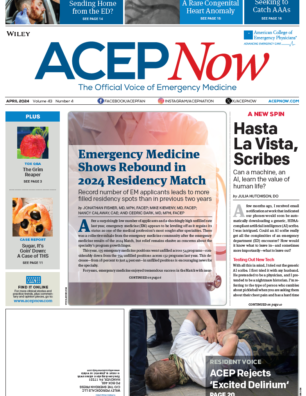An agitated, semiconscious infant or toddler with a compromised airway may naturally set off some panic for emergency physicians. The ability to manage a child’s airway quickly is one of the most important lifesaving skills in the emergency department, and that’s just what will be addressed in “Avoiding Pediatric Airway Panic: Advanced Pediatric Airway Management.”
Explore This Issue
ACEP18 Wednesday Daily News“Following this session, every emergency physician should feel much more comfortable managing the child with acute airway concerns,” said presenter Alfred D. Sacchetti, MD, FACEP, chief of emergency services at Our Lady of Lourdes Medical Center in Camden, New Jersey, and assistant clinical professor of emergency medicine at Thomas Jefferson University in Philadelphia.
Dr. Sacchetti’s session will cover indications for invasive versus noninvasive airway management, indications for pharmacologic agents, and tube dimensions for different ages.
“The session will focus as much on techniques to avoid intubation in children as it will on actual endotracheal intubations,” Dr. Sacchetti said. “The role of both high-flow nasal cannulas and noninvasive positive pressure ventilation will be explored and their expanding role in ED patients examined.”
His session will also present a new technique for performing endotracheal intubation in infants.


No Responses to “Zero in on Better Pediatric Airway Management”